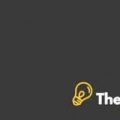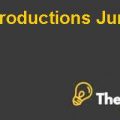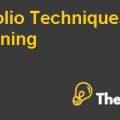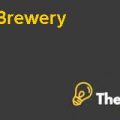
Financial Risk Management
Secularization
The most common use of securitization occurs when the banks lend through credit cards, mortgages, car loans or other form of credit. They lay off their risk by a process of securitization. Such loans are treated as assets and these assets are shown on the statement of financial position. These assets represent cash flow to the bank in the future through interest payments, and total principal amount of loan would be received at maturity.
In order to convert the loan into cash, bank removes the risks which are associated to its future cash receipt and these all process are done through securitization of loan. After having cash back, they lend again and expands cycle of credit formation.
In order to securitize the loan, banks transfer the lending to specifically created companies. These companies are known as special purpose vehicles (SPVs). In case of conventional mortgages, the special purpose vehicle companies effectively purchases a mortgages of bank for cash, and these amount are raised through the issue of bonds. In case of Sub-prime mortgages, Derivative-style instruments known as “Collateralized debt obligation” or CDOs are created so as to securitizing.
Securitization is also beneficial for the company that wants to enhance its credit ratings by using low risk cash flows. Basically CDOs are a way of repackaging the risk of risky assets such risky assets include sub-prime mortgages. CDOs spread the risk into investment layers or ‘tranches’ so that the investor who want to take greater risk for a big return will invest in high risk tranches. But in bond issue, risk is only limited to bondholders.
Each tranche of CDOs is securitized and CDOs are also priced on issue to give the appropriate return to the investors. The investment amount of grade tranche of CDOs is very high but it would provide low return and risk are associated with this tranche which is very low. On the other hand, Equity tranche consist of very high risk and its price is very low and it provides high return but very risky(Anon., n.d.).
CDOs are used as mechanism in which losses are transferred to those investors who want to take high risk. Following are the example of the possible structure for a CDOs:
Tranche 1 (highest risk) known as equity tranche
Tranche 2 (intermediate risk or mezzanine trance)
Tranche 3(AAA senior tranche).
Trance 1 is the highly risky but it provides high return. Tranche 2 is less risky as compare to Tranche 1, it provides lower rate return than Tranche 1. Tranche 3 it is known as AAA senior tranche it is less risky as compare to both Tranche 1 and Tranche 2. Since it is less risky it provides lower return. An individual who wants to take high risk then he will go for Tranche 1. An individual who is risk averse and not willing to take much risk, he will for Tranche 3 (AAA senior tranche) since it provides low level of return but very less risky. If an individual invest in this tranche then its investment are more secured than others tranches.
If assets are held within the Special purpose vehicles framework, the credit rating of the originator and financial status becomes irrelevant. Bondholder becomes indifferent about the financial status and credit rating of the originator if they hold assets under the SPV framework. The process of secularization also provide credit enhancement, in which the guarantee of credit quality of the third party are obtained. Note issued under the secularization are rated according to the investment grade, it is possible just because of the process of secularization that provides credit enhancement.Financial Risk Management Securitization Caase Solution
It is ensured by the process of the structuring a secularization deal that liability side of the special purpose vehicle – the issued notes – bears lower cost than asset side of the special purpose vehicle. This process enables originators for securing lower cost funding.
Process of securitization
Asset backed bonds are created through the process of securitization. These are considered as debt instruments on which interest is payable, usually on a floating basis. Techniques are used by investment banks in order to create a bond structure from any type of cash flows. Assets which are securitized normally includes loans, credit card loans, residential mortgages etc. Number of participant are involved in the securitization process. Special purpose vehicle is set up for the purpose of securitization. Securitization involves true sale of underlying assets from the balance sheet. For this purpose separate legal entity is created in order to act as issuer of the notes. The assets which are being securitized are bought by the SPV. The process are as follows:..........................
This is just a sample partial case solution. Please place the order on the website to order your own originally done case solution













